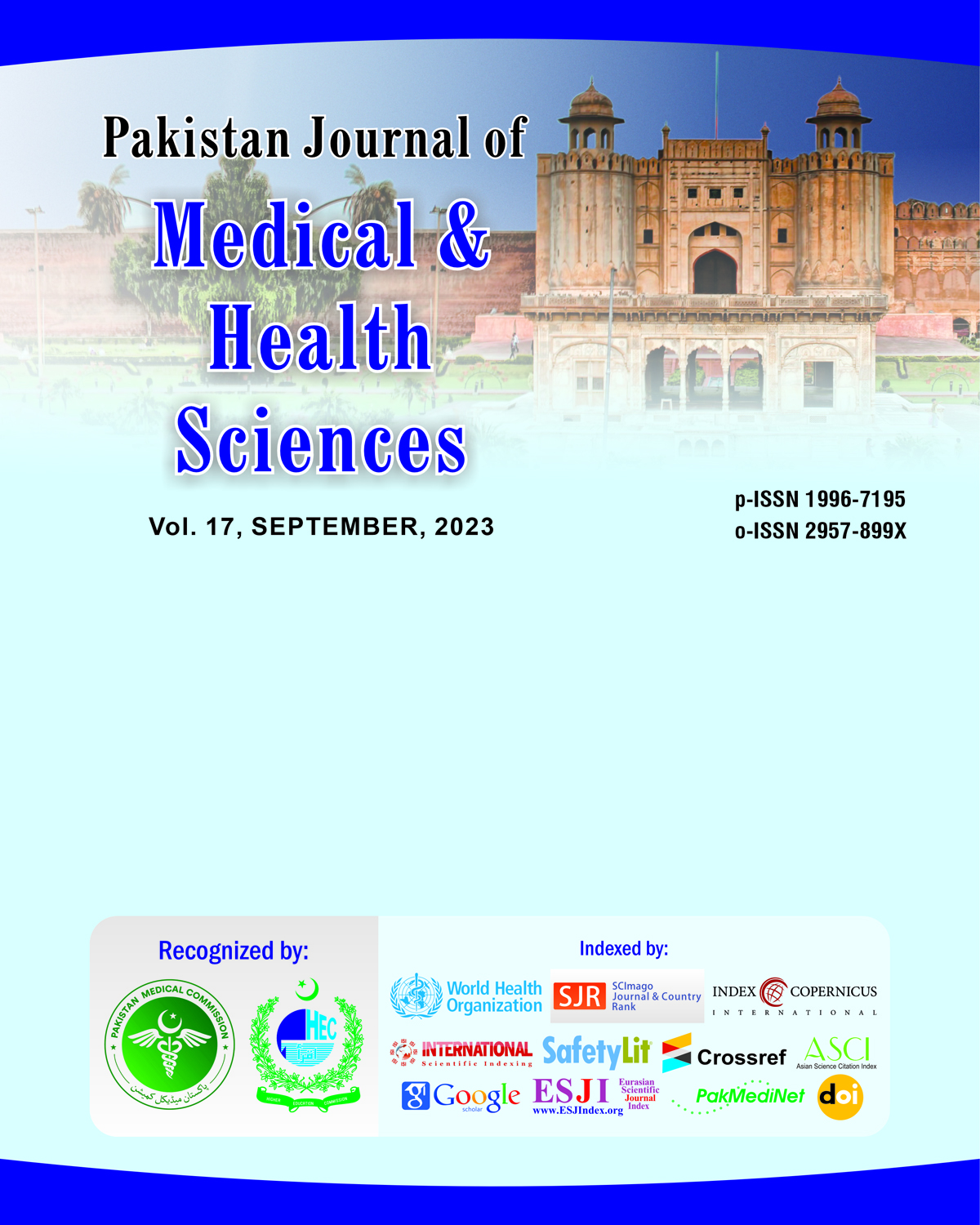Diagnosing Gastric Perforation Caused by Accidental Ingestion of Fish Bones
DOI:
https://doi.org/10.53350/pjmhs2023170970Abstract
Background: Foreign body perforation of the gastrointestinal tract is most frequently caused by ingestion of fish bones (FB). A wide range of nonspecific clinical manifestations are observed in patients.
Objective: Our research aims to help you establish a correct presurgical diagnosis by outlining CT radiological markers that signal when to search for the FB.
Methods: Total 85 patients were presented in this study. All patients with radiological diagnosis of gastrointestinal perforation caused by fish bone detected by CT were retrospectively reviewed. An analysis was conducted to describe it. We looked for radiological signs such fatty infiltration, extraluminal air bubbles, mural thickness, and radio-opaque foreign bodies. Possible problems were also evaluated.
Results: There were 51 (60%) males and 34 (40%) females with mean age 67.13 years. Most common site of perforation was ileon found in 38 (44.7%) cases. There was localised extraluminal air bubbles in 22% of cases, mural thickening in 42%, foreign bodies in 97%, and regional fatty infiltration in 100% of cases. Abscess was just found in 23 cases.
Conclusion: Most often, fat was found to be involved in the area surrounding the fish bone-perforated intestinal segment. As a result, the radiologist must look for the presence of an object other than fat when conducting an abdominal study.
Keywords: Fishbone, Gastric Perforation, Computed tomography
Downloads
How to Cite
Issue
Section
License
Copyright (c) 2023 Muhammad Imran Farid, Muhammad Daraz Khan, Nasir Naseem Akhtar, Ghashia Khan, Farhan Ali, Sadaf Iqbal

This work is licensed under a Creative Commons Attribution 4.0 International License.


